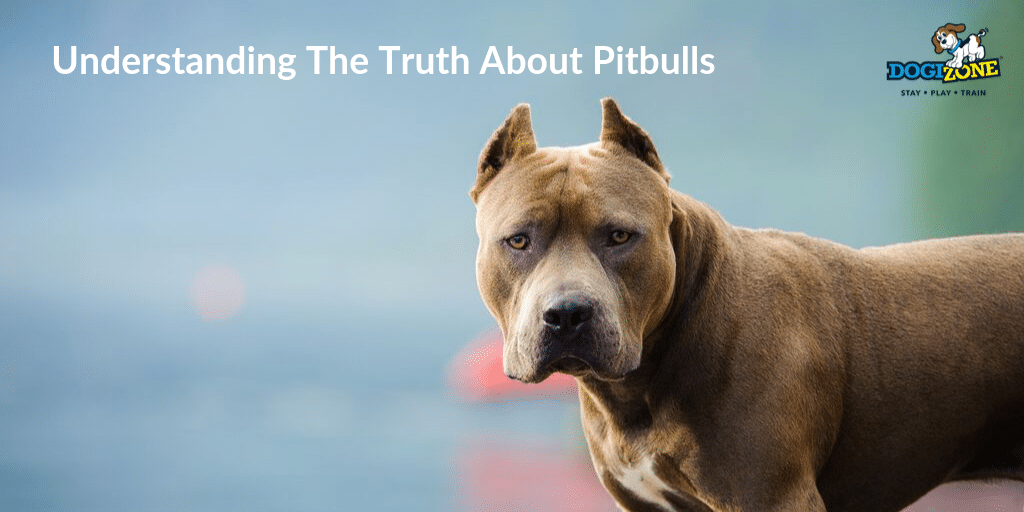Understanding The Truth About Pitbulls
It seems that there are two different groups of people when it comes to breeds of dogs often lumped together as Pitbulls. Since October is National Pitbull Awareness month, it is helpful to take an objective look at this misunderstood breed and how myths about these dogs continue to cause confusion, concern, and consternation in the general public. 
In the United States, the term Pitbull is actually a description of a physical type of dog as opposed to a specific breed. This is similar to the term “terrier” or “hound” to describe a dog by the specific features.
The Pitbull type was first used to describe a stocky, broad-headed dog type of dog with a short, smooth coat. In the 1800s these were small to medium-sized dogs, and they were found on farms and as pets throughout the country. A small number of the breed were used for dog fighting, but this is not as common as many people assume.
There are recognized pedigree types of breeds within this general description. They include the Staffordshire Bull Terrier, the American Staffordshire Terrier, the American Pitbull Terrier, and the American Bully. The American Bully is larger, wider, and more muscled, while the Staffordshire Bull Terrier has the distinctive large, flat head and shorter legs and body.
Regardless of the breeding, the term Pitbull is used to describe all of these breeds, and even mixed breed dogs with the wide head, large mouth, and wide body and chest. In addition to being labeled together, all of these dogs are seen by many as dangerous, which is simply not true.
The CDC Information on Dog Bites
While it may seem there are more attacks reported in the media by Pitbulls, that is not the case when looking at long term studies by the Centers for Disease Control and Prevention. There are approximately 30 deaths per year in the USA from dog bites, with the majority of these involving young children. In the recorded cases, there were over 20 different breeds identified in the accounts of these tragic incidents.
Pitbulls Cannot Lock Their Jaws
Research has clearly shown that there is no dog breed with the ability to bite and lock their jaws on their prey. In studies on dog bite force, the Rottweiler and the German Shepherd Dog both had a greater bite force than the Pitbull. The Rottweiler had the most force with 328 pounds, while the Pitbulls tested averaged only 235 pounds.
Pitbulls are Bred to be Aggressive
Pitbulls have different temperaments and personalities. Their level of aggression or friendliness is largely a factor of their early interactions with humans, dogs, and other animals.
A well-trained and socialized Pitbull is calm, accepting and friendly, just like any other breed. On the other hand, if they are neglected, abused, or left unsocialized and untrained, they can behave aggressively, which is no different from a Chihuahua or an Australian Cattle Dog.
Unfortunately, breed bans and other types of restrictions on this type of dog create fear in the public and allow misconceptions to spread. The truth is with this dog type, as well as any breed or mixed dog, socialization, training, and a responsible, loving dog owner is the key to having a well-behaved pet.

